Seedling fertilizer is a controversial topic among master gardeners. While whether you should fertilize seedlings is a matter of personal choice, many studies suggest supplying additional nutrients and seedling fertilizer results in robust seedlings. Those seedlings survive better in the garden once transplanted and produce more harvest over the season. But most of the new gardeners have no idea when, what and how to feed their tomato and other seedlings. These are common questions every first-time seed starter faces.
In this guide, you will find answers to the most frequently asked questions about fertilizing seedlings and the best fertilizers options suitable for the young seedlings.
When to start fertilizing the seedlings?
You should start feeding your vegetable and flower seedlings with a mild dose of fertilizer when they have first sets of true leaves. It is because the nutrients required for the seedlings to develop the first set of leaves, called ‘Cotyledons,’ are already packed in the seed embryo.
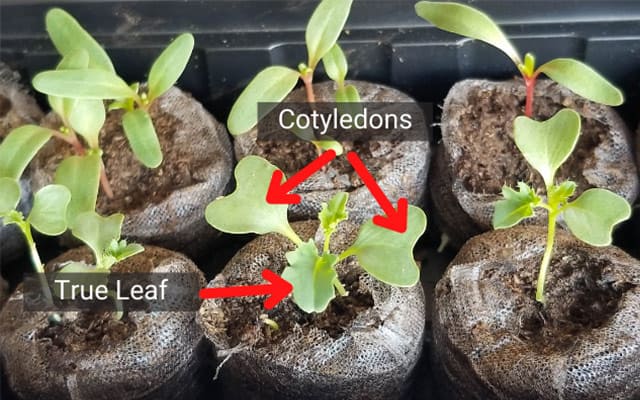
As you can see in the image, the first two leaves, closest to the soil, are cotyledons. The set of leaves above cotyledons are ‘the first set of true leaves.’
When the seeds sprout and peek out of the soil, they first develop ‘Cotyledons.’ Cotyledons look little different than the actual leaves your plant seedlings eventually develop. The function of cotyledons is to absorb sunlight, turn it into food and send the prepared food to the entire plant until the first set of true leaves develop and take over their regular duties. Cotyledons act as surrogates for the true leaves. The seedlings will survive just fine without any fertilizer or added nutrients until this stage.
Cotyledons turn yellow and eventually fall off as seedling grows.
After developing the first set of true leaves, the young plant needs additional nutrients. Check your seedlings whether they have at least one set of true leaves on them. If they have, you are ready to start fertilizing the seedlings.
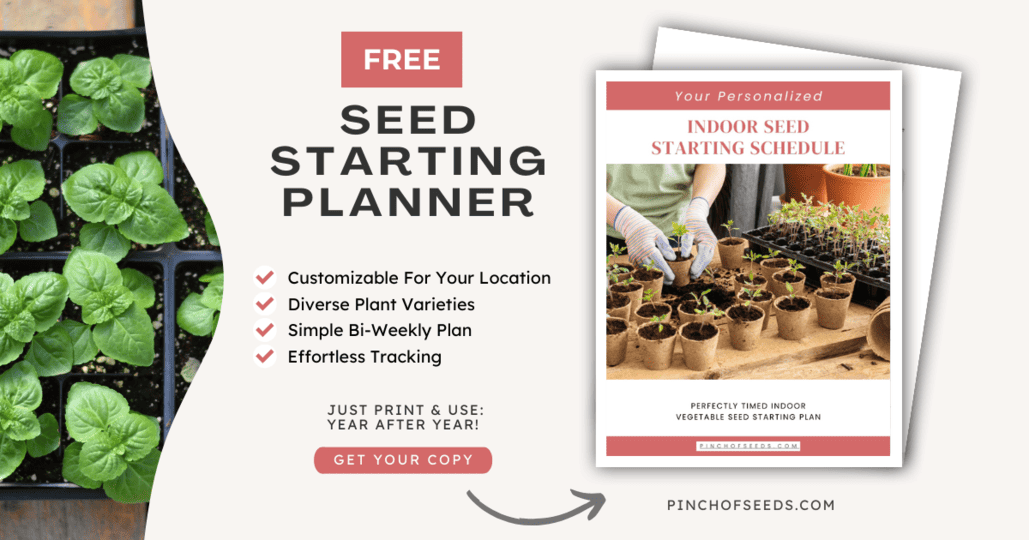
What is N-P-K?
Fertilizer has three different nutrients that plants need- Nitrogen (N), Phosphorus (P), and Potassium (K). The combination is known as N-P-K ratio.
Nitrogen (N) helps develop leaves and produce Chlorophyll, which is responsible for the green color of the leaves.
Phosphorus (P) helps develop strong root growth and produce flowers and fruits.
Potassium (K) helps develop massive roots and grow strong stem.
Best Seedling fertilizers
It is best to feed the young seedlings with a mild dose of either a balanced fertilizer (an equal part of N-P-K) or a fertilizer with higher ratio of Nitrogen and Potassium (e.g., 5-2-3, or 3-1-2). At this stage, liquid fertilizers are better than slow release fertilizers or granular fertilizers. The fertilizer can be organic or non-organic, depending upon your choice of gardening philosophy.
Above suggested N-P-K ratio will help develop new leaves, form a dense root system, increase plant height and change the color of the leaves to darker lush green.
I personally prefer organic fertilizers. I use Jobe’s Organics All Purpose fertilizer (4-4-4) and Neptune’s Harvest Fish and Seaweed Fertilizer for my tomato, peppers and vegetable seedlings. Other fertilizer options and how to use them are described below.
Best Organic Seedling Fertilizers
Best Water Soluble Fertilizers of seedlings
How to fertilize vegetable and flower seedlings?
Apply fertilizer to your vegetable and flower seedlings in two phases: First, a one-time application of balanced fertilizer when up potting the seedlings into individual larger pots from seed trays. Second, weekly applications of diluted soluble fertilizer, until the seedlings are ready to be transplanted into the garden.
While any fruit-bearing vegetables or flower seedlings can benefit from this trick, it works very well for growing tomato and pepper seedlings.
Let me explain the two phases in detail.
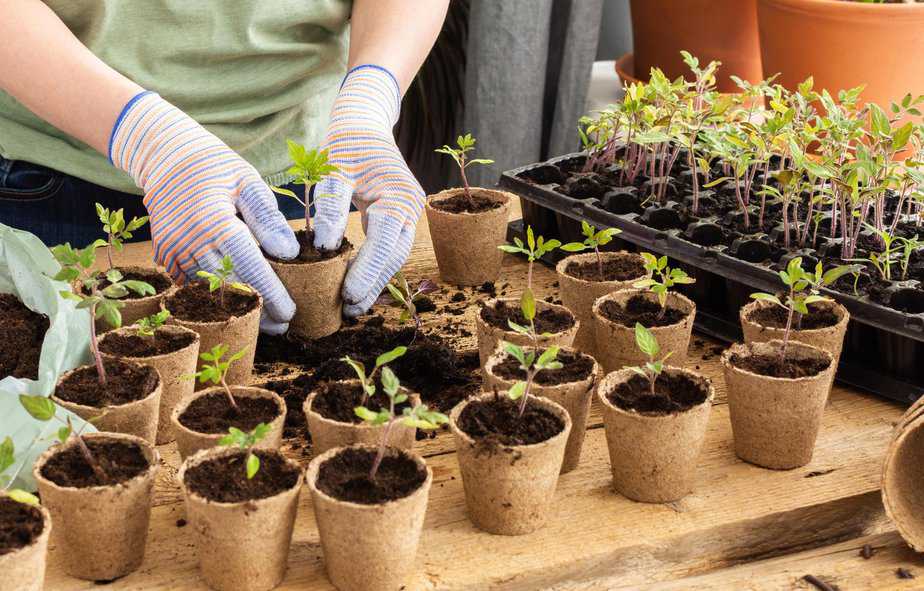
Phase 1. Fertilizing seedlings when potting up:
When the seed sprouts have one to two sets of true leaves, consider transferring them from a seed starting tray into individual pots or a larger cell tray. This process is called potting up. Fill up the individual containers with good quality potting mix instead of the seed starting mix. Since the components of potting mix are different than those of the seed starting mix, the potting mix will provide more moisture control, drainage, and nutrients to the developing seedlings.
Below is the method I follow for the one-time application.
- Mix the balanced organic fertilizer such as Jobe’s Organics All Purpose Granular fertilizer (4-4-4) and earthworm castings with the potting mix in a large bucket or empty container.
- Begin feeding the fertilizer at the lower concentration level than directed. For example, if the direction is to mix 1.0 tbsp for each 4” pot, mix half a tablespoon for each 4” pot.
- Also, add a half teaspoon of Rock Dust into the potting mixture. Rock dust provides vital micro-nutrients and trace minerals for the maximum health and vigor of the seedlings.
- Fill the pots with this mixture.
This soil recipe has worked wonders for my seedlings. It encourages new growth of the leaves, extensive root system and overall robust foundation for a healthy growth and productive plant.
Phase 2. Fertilizing seedlings weekly with liquid fertilizer:
After two weeks of potting up the seedlings, start feeding the seedlings with organic water soluble fertilizer which has high Nitrogen (N) value. Mix half of the suggested concentrated fertilizer into 1 gallon of water. Then, bottom-feed this liquid to the seedlings to prevent over watering and control fungus gnat problems. Nitrogen-rich fertilizer helps develop new leaves and increases young plant’s height.
I personally like Alaska Fish Fertilizer (5-1-1), but Jobe’s Organics Plant Food Mix with Biozome (5-2-3), Fox Farm Liquid Concentrate Fertilizer (6-4-4) and Neptune’s Harvest Fish Fertilizer (2-4-1) have worked perfectly fine for me as well.
Other ways to fertilize seedlings:
You may want to apply occasional feeding of foliar spray. Dissolve a mild dose of Fish & Seaweed Fertilizer, Compost tea or Kelp liquid in water. Fill a spray bottle with this solution. Take the seedlings outside and bathe the seedlings with this solution. Make sure to spray on both sides of the leaves.
The leaves will absorb the nutrients and make the nutrients available to be used immediately. A foliar application can be used to treat a specific deficit or to kick start a growth spurt in stunned seedlings.
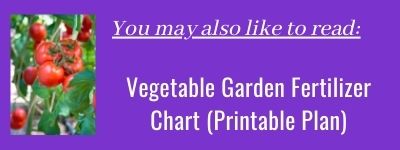
How often should you fertilize seedlings?
The first application should be at the time of potting up the seedlings. Two weeks after potting up, start the liquid fertilizer applications. You should continue the liquid fertilizer applications every week until the seedlings are ready to be transferred to the garden.
If you are following my seed starting schedule, you will feed the liquid fertilizer to the pepper seedlings about 4 to 5 times before they are transplanted outdoors.
When NOT to fertilize the seedlings
Knowing when not to feed the seedlings is as important as knowing when to feed them. Feeding fertilizer to stressed seedlings will make the condition worse.
When the seedlings are stressed, they will tell you. Here is how:
- The leaves of the seedlings are droopy – they need water.
- The seedlings are tall and leggy – they need light.
- The tips of some of the leaves are dry and brown – they are burned by too much light, sun or fertilizer.
- The seedlings are falling on the soil – they may be infected by mold.
You should first solve the problem and not start the fertilizer until the seedlings look normal.
Now that you know when to start fertilizing the seedlings, you may also want to know what are the best fertilizers, how to apply them and how frequently to use them without burning the seedlings. I will answer each question below, but first, let’s understand what fertilizer is made of and its effects on plant development.
Tips for fertilizing seedlings:
- Refer to the directions on the fertilizer package or container. Direction and application rate may vary from brand to brand.
- When it comes to applying fertilizers, less is better than more. Using more will burn the new seedlings and will cause shock or death.
- Do not apply fertilizer on stressed seedlings.
- Water the seedlings regularly. Don’t let them dry out between the applications. The fertilizer will cause the growth of the seedlings. At this developmental stage, it is crucial for the seedlings to have an adequate amount of water.
- Just like water, providing enough light is equally important to get the full benefit of fertilizing the seedlings. Continue supplying a good source of light to support the growth spurt.
- Some organic sources of fertilizer ingredient come from bone meal, blood meal or fish products. They smell really bad. If you don’t want to stink up your house, apply the fertilizers outdoor on a warm, sunny day. Let the seedlings air out for a few hours before bringing them indoors.
- The smell of fish and bone may make your pets, especially cats and dogs, curious. Put the seedlings outside of their reach, or secure them at a safe distance to prevent mishaps.
- Once the seedlings are transplanted into the garden, their nutrition requirements will be different. Refer to this Printable Vegetable Garden Fertilizer Schedule for complete instructions.

How to fertilize Pepper seedlings:
Once the pepper seedlings develop their first set of true leaves, transfer them in their individual, larger pot. Now is the best time to apply a mild dose of a balanced fertilizer like 4-4-4 at this time. Two weeks after that, start applying diluted liquid fertilizer weekly, until the seedlings are transplanted into the garden. Applying fertilizer at a full strength will burn these new seedlings!
This method is particularly beneficial to pepper seedlings if you follow the pepper top-off method. Topping off the pepper seedlings produces more fruits because it encourages branching out and stronger stem development before seedlings are ready to be transplanted to the outdoor garden. If you want to know, here is how I tripled pepper harvest by optimized schedule for pruning and fertilizing pepper plants.
Here are the complete guide to growing tomatoes and pepper plants in your garden.
Summary
It is essential that you understand when, why and how to feed the seedlings properly. Too much fertilizer can hurt more than help the seedlings so be cautious. I have had great success by following the above methods. I hope you get the same results as well regardless of your choice of organic or non-organic fertilizer. Please share your success stories or ask questions in the comments section below.
Happy gardening!
References:
- Fertilizing seedlings and plugs by University of Massachusetts Amherst
- Timely tips for starting seedlings at home by Texas A&M University
Related Topics:
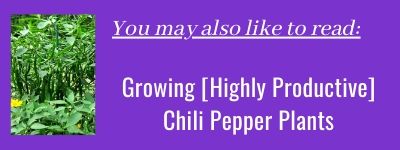
Question? Comment? Want to help?
If you have any question or suggestion regarding fertilizing seedlings, please leave a comment below.
If you find this information helpful, don’t keep it to yourself! Share the link to this article on your Facebook page or gardening group. Your fellow gardeners will thank you for it!
Pin this post for a visual reminder
Would you like to refer to this article frequently? Just pin this image to one of your Pinterest gardening boards so that you can easily find it later when you need it.
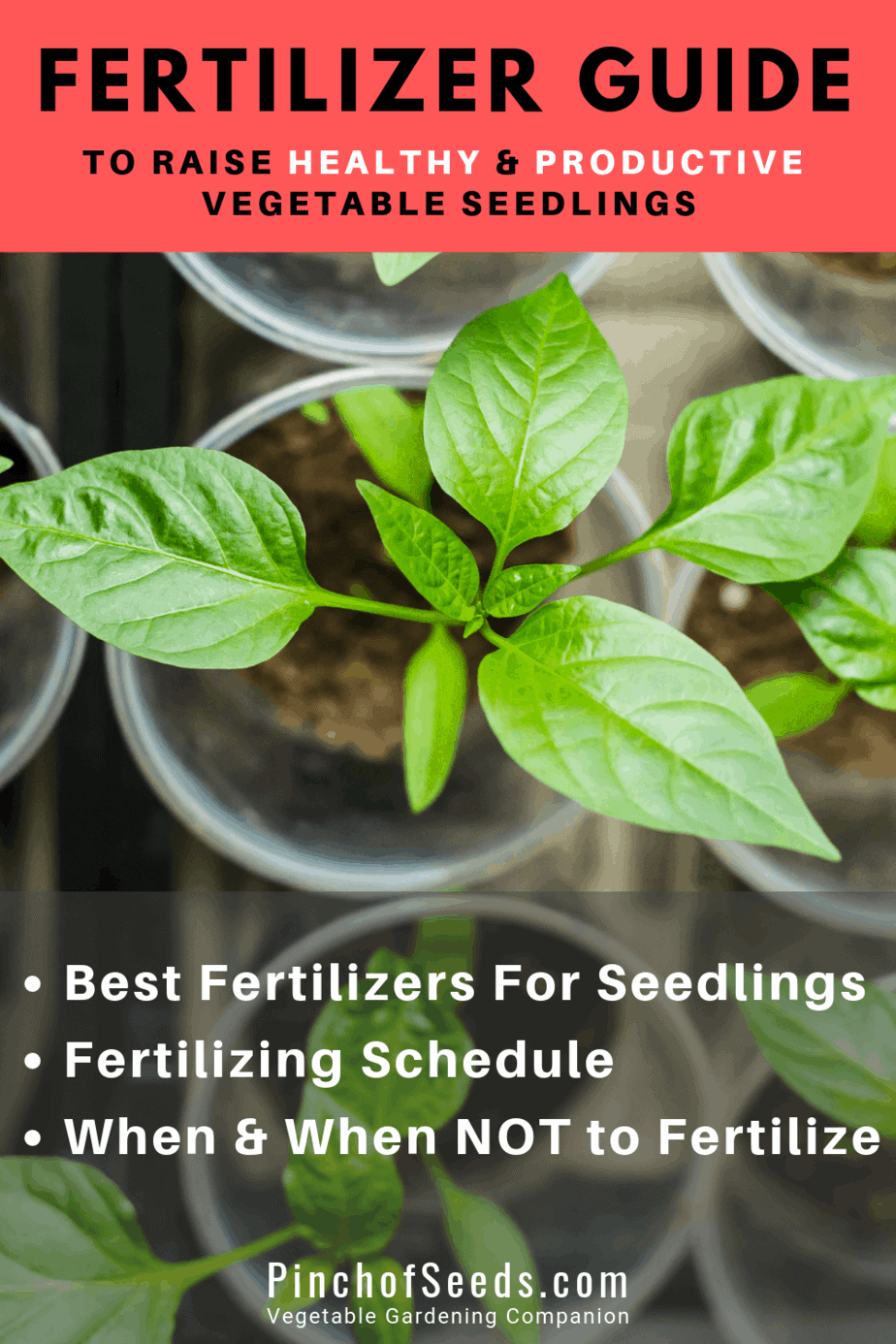
Last Updated: 1/23/2024

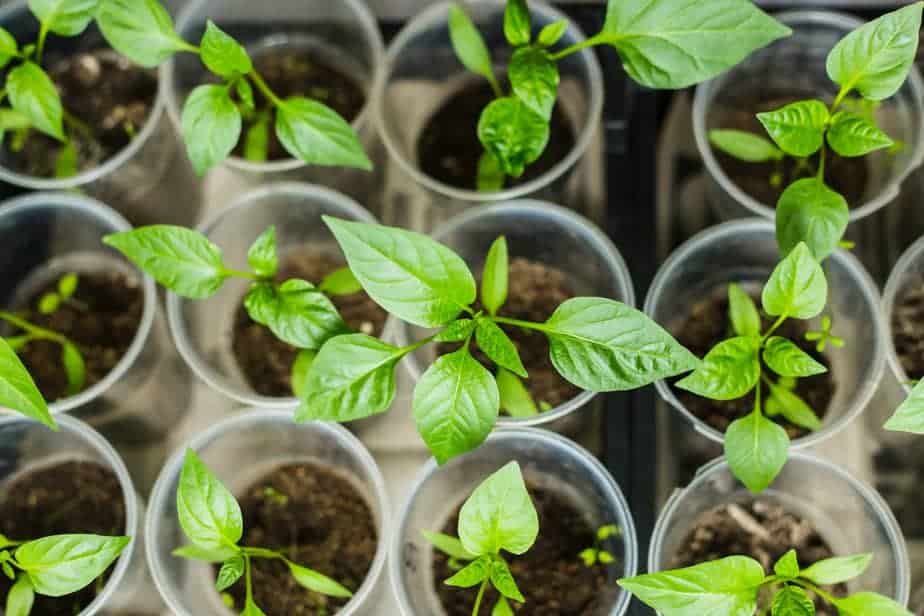
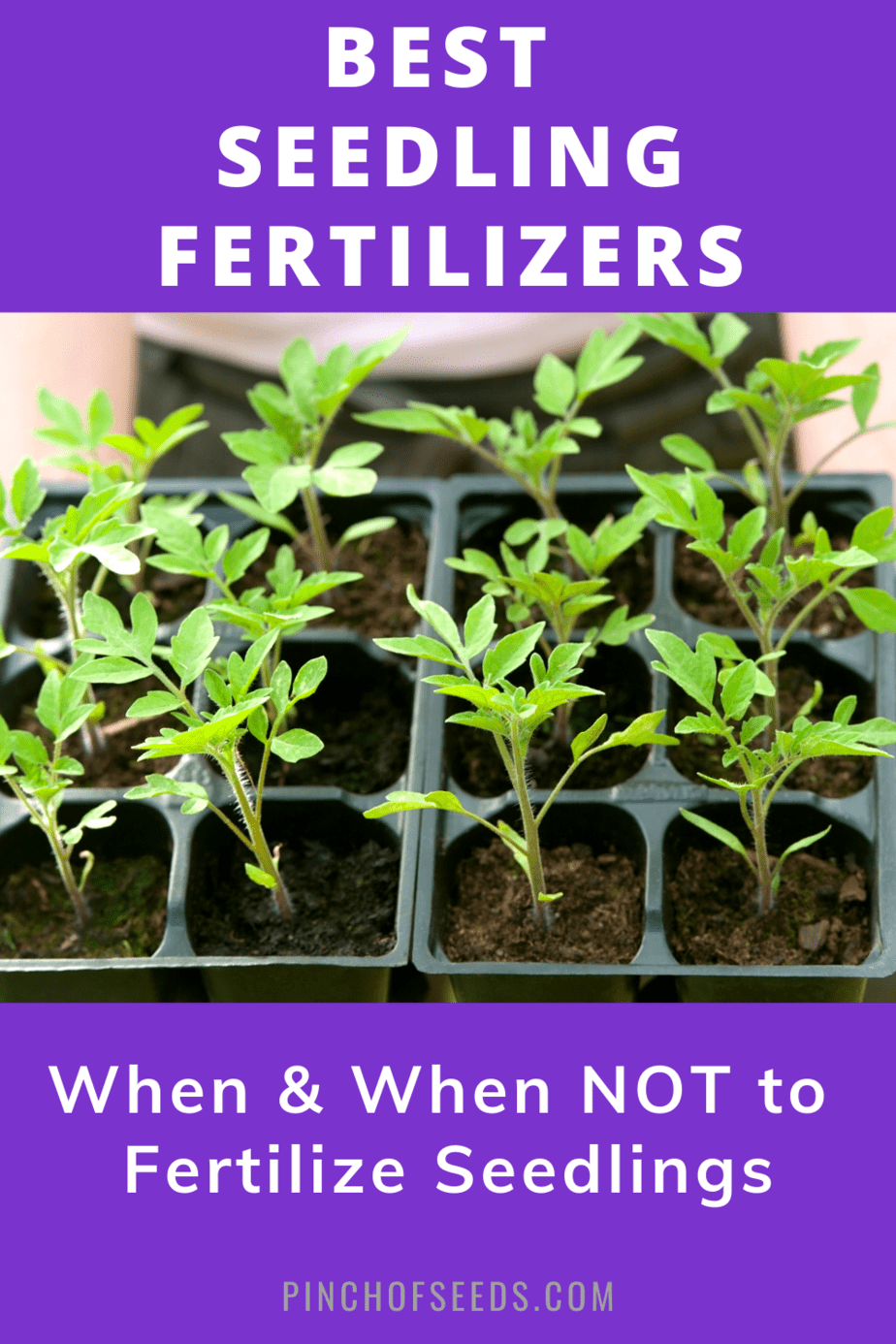
How to fix stem leggy in tomato seedlings
Incredible piece of information over here.
I think that Seedlings should be fertilized after they are three inches tall and can be fertilized weekly after that until transplanting.
Thank you great advice. On can never know enough about gardening.?
When potting up, if using a potting mix that has some type of added nutrient in it such as worm castings, should I still add more fertilizer as you suggest?
Hi Cheryl,
No need to add additional fertilizer while potting up the seedlings if the potting mix already has added nutrients in it.
-Gopi
Can the foliar application replace the liquid fertilizer? I bought a liquid kelp fertilizer and i read online that it’s more effective to spray it on the leaves.
Yes, foliar applications are also effective as seedling fertilizer.
– Gopi
Hi, I was trying to find the Jobe’s Organics Plant Food Mix with Biozome (5-2-3) you referred to above. When I click on your link for it, it takes me to a Jobe’s Organics Vegetable & Tomato Fertilizer, 3-1-2 Water Soluble Plant Food Mix with Biozome, 10 oz Box Makes 30 Gallons of Organic Liquid Fertilizer. Is it just as good?
Hello Jenny!
Yes, you can use either one of them. Make sure to follow the direction on the packaging.
– Gopi
Great info, thanks!
You provide some good information. Unfortunately, it runs counter to some pop sites out there and arguments ensue; type of soil bed for germinating seeds vs growing seedlings, if/when to fertilize, prevention of damping off (hint—many potting soils invite it), when or if to fertilize, etc.
Thus, I would encourage you to cite your resources for statements made, or at least include a list of resources backing up the article. There is so much garbage out there, or regurgitated pop opinions from pseudo gardening experts and pop literature/articles taken as fact, that gardeners are FINALLY becoming suspicious of non-science backed nonsense. Which is why it is even more important for writers like you to stand above the crowd on a foundation of vetted/verified science.
Her garden and harvest photos are enough evidence for me that her fertilizing process is working! Gardening is all about trial and error. She’s expressed what to do (and not to do) to ensure healthy plants. Her source is real-life experience, and it’s great that she’s sharing this for others to learn from. 🙂
Give me best fertilizer dosage and treatment for plug nursery vegetable seedling production healthy and robust and early